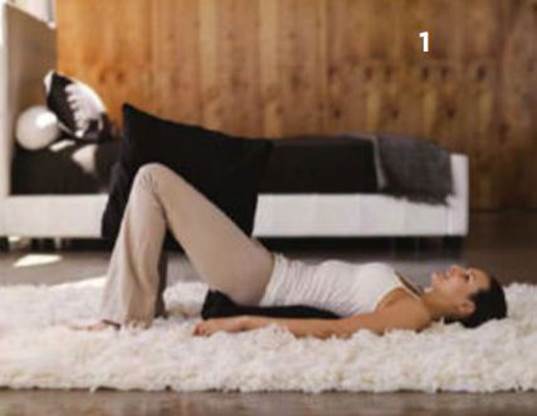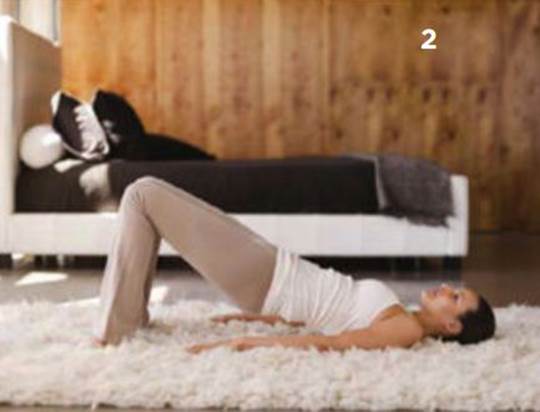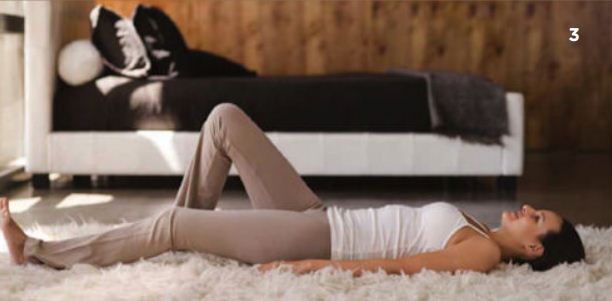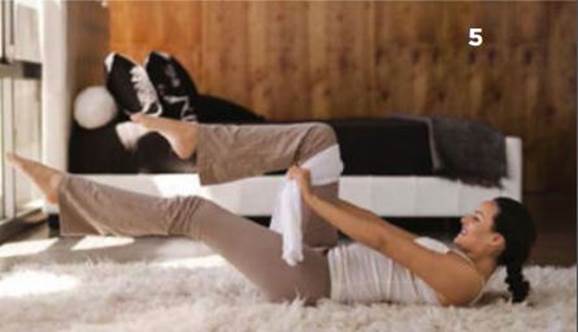Trim and tone your new-mom midsection
with five targeted moves.
The thought of doing a million crunches to
get rid of your post-baby "pooch" sounds pretty boring, right? As
luck would have it, you don’t need to, because crunches are as ineffective as
they are dull for toning your abs muscles. In fact, working only the outer
abdominal muscles, as crunches do, without strengthening the underlying ones
first can actually make your pooch worse. "Working your abdominals from
the inside out is the key to a flatter tummy and lasting results," says
Pasadena, Calif.-based fitness expert Tracey Mallett, creator of the Get Your
Body Back DVD.
Mallett designed this easy postnatal
workout exclusively for Fit Pregnancy to tone the transverse-your deepest
abdominal muscle- quickly. With your doctor’s OK, try the first move one week
after delivery, eventually working up to all five moves, three to four times a
week.
1. Transverse Breathing with Pelvic Tilt
Do this move as early as one week after you
have your baby if you had a vaginal delivery; if you had a C-section you might
have to wait eight to 10 weeks. Lie on your back with your knees bent and a
pillow under your hips and another between your knees. Feet flat and your arms
at your sides, inhale, then exhale and draw your abs in and tuck your pelvis
under slightly, squeezing your buttocks as you do a Kegel (learn how at
fitpregnancy.com/kegels). Hold 5 seconds and release for 10 reps.
Benefits:
Improves deep abdominal strength and stamina

Do
this move as early as one week after you have your baby if you had a vaginal
delivery
2. Pelvic Bridge
After six weeks, add this move to your
routine. Lie on your back with feet hip-width apart, knees bent. Inhale, then
exhale as you draw your abs up and in toward your spine. Tilt your pelvis up,
lifting your hips off the floor into a [shown]. Slowly lower down to starting
position. Repeat 5 times, building up to 10.
Benefits:
Strengthens the transverse, buttocks and lower back

After
six weeks, add this move to your routine. Lie on your back with feet hip-width
apart, knees bent.
3. Heel slides
Lie on your back with your knees bent, feet
hip-width apart and abs drawn in. Flex your left foot, pressing your heel into
the floor. Keeping your pelvis still, inhale, then exhale as you use your deep
abdominal muscles to push your left heel away from your body, keeping the knee
slightly bent [shown]. Return to starting position. Alternate sides, doing 5
slides on each side, working up to 10. Do these first three exercises together
and in order for the next two weeks, then add move 4.
Benefits:
Strengthens the transverse and lower back, supporting your core

Lie
on your back with your knees bent, feet hip-width apart and abs drawn in.
4. Abs Towel Pulse
Lie on your back, knees bent. Place a towel
across your upper shins and grasp each end. Pull the ends of the towel and
squeeze thighs together. Inhale, then exhale as you draw your abs in and lift
your shoulders off the floor [shown]. Hold, and contract and release, your abs
muscles 10 to 12 times, working up to 20. Do moves 1-4 in order for two weeks.
Benefits:
Strengthens the transverse

Hold,
and contract and release, your abs muscles 10 to 12 times, working up to 20.
5. Single-Leg Stretch with Towel
Add this move at 12 to 14 weeks postpartum,
doing moves 1-5 in order. Lie on your back with your knees above your hips and
your shins parallel to the floor. Place a small towel on top of your thighs,
hold on to the ends and push against your thighs to create resistance. Lift
your head and shoulders and extend your left leg out as you exhale [shown].
Switch legs and repeat, alternating legs for 5 reps and working up to 10.
Benefits:
Strengthens the transverse, giving you a stronger, sleeker-looking torso

Single-Leg
Stretch with Towel
How to check for diastasis
A diastasis recti is a separation of the
rectus abdominis, the “six-pack” abdominal muscle, at the midline of the
abdomen. To help you determine if you have it, lie on your back with your knees
bent, feet flat. Place the fingertips of one hand horizontally just above your
belly button. Gently press your fingers into your abdominal muscles and roll
your upper body into a crunch. Move your fingertips back and forth. If you feel
a separation between the muscles more than two to three fingers wide or if you
see a small mound protruding, you have a diastasis recti.
To improve a diastasis recti, lie flat on
your back with your knees bent and feet flat. Place a towel under your lower
back, grasp the ends and cross your arms. Lift your head and shoulders,
contracting your abdominals as you pull the towel tight around your waist,
bringing the abdominal muscles together. Lower and repeat 20 times.